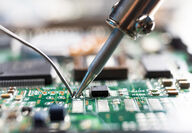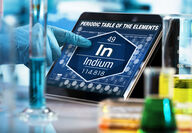Sorted by date Results 1 - 4 of 4

From flashlights to supercomputers, tin is the glue for an electronic age Lost in the clamor for lithium, nickel and other metals needed for the batteries powering electric vehicles and modern electronics, or the rare earth elements that turn stored energy into motion, is the enormous need for a much more modest metal that is so fundamental to the advancement of technology that it almost goes unseen – tin. While other technology metals are critical to certain products and s...

From the advancements of technology during the Bronze Age to the computers and telecommunication systems of today's Big Data Era, tin has been critical to human progress for at least 5,500 years. Sometime around 3500 BC, Sumerians living in modern day Turkey and Iran discovered that mixing a little tin with copper created bronze, an alloy that produced much more durable weapons and tools than those cast from copper alone. This cutting-edge discovery offered a strategic and...

Cans, cups, roofs, and foil hats are likely the first things that come to mind when thinking about tin – none of which conjure images of a metal that should be considered critical to a modern country like the United States. According to a study carried out by Massachusetts Institute of Technology, however, tin is the metal expected that be most impacted by new technologies. Commissioned by Rio Tinto, the MIT study found that tin beat out more likely technology metals candidate...

While indium is not part of the everyday lexicon, if you are reading this article on your smartphone, computer or tablet there is a very good chance you are looking at (or more accurately, through) indium right now. This is because indium-tin oxide is used as a transparent conducting film applied to virtually every flat-panel display and touchscreen computer, tablet, and smartphone on the market. This thin coating transforms incoming electrical data into an optical form, a pro...